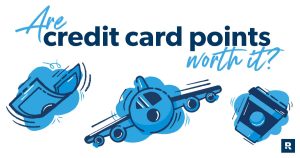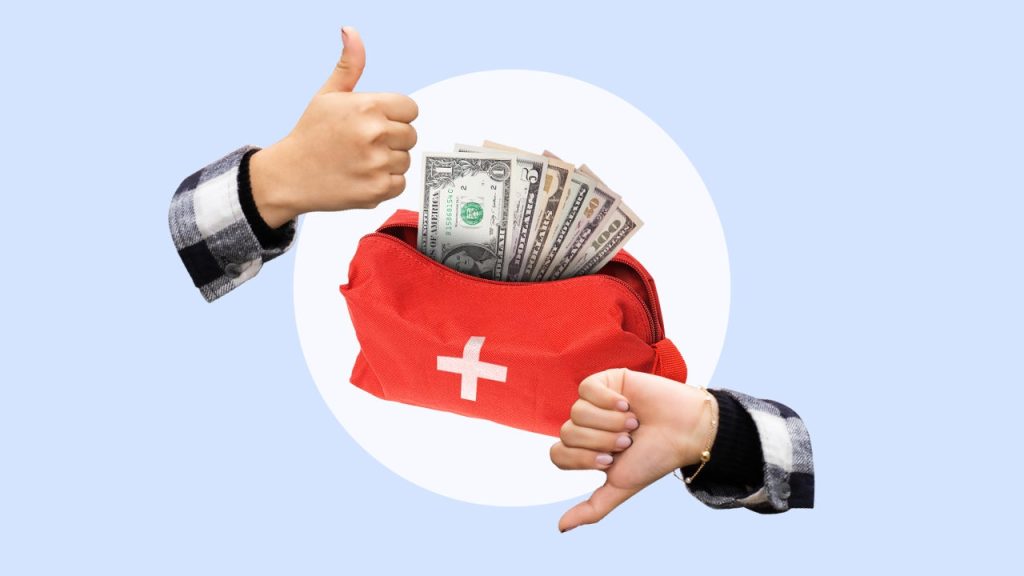Key takeaways
- Emergency loans provide quick access to cash for unexpected expenses, but they come with high fees and interest rates.
- It is important to carefully consider if an emergency loan is truly necessary and to explore alternative options such as budgeting and building an emergency fund.
- An emergency loan should be a last resort, as relying on them without making changes to spending and saving habits can worsen your financial health.
The advantage of an emergency loan is it gives you access to quick cash if you’re faced with an urgent, unexpected expense. Many borrowers choose personal loans for emergencies because of how easy they are to qualify for and how quickly you can get the funds to pay for costly vehicle repairs, hospital repairs, medical or dental bills or other household expenses.
Although they’re a convenient funding source, there are drawbacks like fees and high rates for bad credit personal loans. Emergency personal loans can be lifesavers in a bind, but can also worsen your financial health if you rely on them without making changes to your spending and savings habits.
Understanding the pros and cons of an emergency loan before you need one can give you the peace of mind of having a backup plan if the unexpected happens.
Pros of emergency personal loans
Choosing personal loans for emergencies comes with a number of benefits ranging from fast funding times to an entirely online experience.
Fast funding
Most personal loan lenders offer quick approvals with next-day funding possible. Some even offer same-day funding if you apply early enough in the day. That gets your car out of the shop faster or pays your dentist to repair that root canal.
Easy qualification
Most personal loans are unsecured, which means approval is based mostly on your credit score and income stability. That means less paperwork is needed, which can be a welcome benefit in an urgent situation.
Stable fixed-rate payment
Emergency loan interest rates are fixed, so you won’t have to worry about rate changes like you would with a credit card. You’ll also know your payment start and end date when you sign your final papers.
Longer repayment options
Having one to seven years to repay an unplanned bill can give you more payment choices. That can be a big relief if you’re still recovering from a medical emergency or missed work due to your car being in the shop.
Accessibility
You don’t need perfect credit to get approved for an emergency loan, and may qualify with scores as low as 300. Although bad credit loan APRs are as high as 36 percent, they are much cheaper than the 400 percent APRs you’ll find on payday loans.
Less impact to your credit score than revolving debt
Unlike credit cards, personal loans are installment loans, and taking one out won’t affect your credit utilization ratio. Your credit utilization ratio is based on how much of your total revolving credit you have used, and doesn’t factor in installment loans.
Cons of emergency personal loans
Despite their flexibility and fast funding times, emergency loans also have disadvantages to be aware of before applying.
Fees
Lenders may charge origination fees as high as 12 percent of the loan amount. Some even assess early repayment penalties. You may also pay late fees, overdraft fees and other charges depending on the lender.
No payment flexibility
You can’t make a lower payment than what is stated in your loan agreement. Once you pick a repayment term, you’re locked into it until it ends or until you refinance.
Interest rates
You could pay a higher interest rate than a credit card if you have a very low credit score. Read the fine print: Some alternative payday personal loan lenders may charge triple-digit APRs.
Requires stable income
Because most personal loans are unsecured, your income needs to be consistent for approval. You may not qualify if your seasonal, tip or commission income varies significantly.
Can become a stopgap for poor savings habits
Consumers often turn to emergency personal loans because they don’t have money saved in an emergency fund. In fact, the Bankrate Emergency Fund Report found that 53 percent of people have less than three months’ worth of rainy day savings.
May lead to reliance on debt
The ease and speed of getting personal loans makes it tempting to use them whenever money is tight. Debt should always be a last — rather than first resort in an emergency.
When an emergency loan might be necessary
There are times when getting an emergency loan makes sense. This is especially true if paying cash for the emergency would deplete your savings and leave you unable to pay basic bills like rent, groceries or car utilities.
- Unexpected home repairs that affect your home’s safety. A roof leak in the rainy season, air conditioning failure in summer or heater breakdown in winter often require repair bills that can quickly run into the thousands of dollars. An emergency personal loan can cover some or all of the expenses.
- Car repairs. If you live someplace without good public transportation, a working car is an absolute must. Major car repairs get pricey quickly, and temporary transportation costs like Uber get expensive. An emergency loan may get you back on the road faster.
- Dental work. Unfortunately, even the best dental health plans don’t entirely cover every type of dental work. An emergency crown or chipped tooth repair can cost thousands, which may make an emergency loan a necessity.
- Personal tragedies. Although some airlines offer bereavement fares, the cost of flying your family across the country to attend the funeral of a loved one can add up. An emergency loan can give you mor time to repay the loan while you’re grieving the loss.
When an emergency loan should be avoided
The last thing you want to do is borrow money with average rates in the double digits that you don’t really need. There are some scenarios where it also just doesn’t make sense.
- It’s a want, not a need. You may be stressed and feel like you need to take an emergency trip out of town to decompress, but it’s not a must. Borrowing emergency funds should be reserved for costs that prevent you from working, eating, being healthy or having a safe place to live. Everything else is likely a want.
- You’re going to switch jobs. A personal loan is approved based on how much you make now. If you plan to change careers or jobs, skip the personal loan, or use a credit card. The credit card’s minimum payment option will give you a lower payment while you’re job hunting or waiting for your first paycheck at your new gig.
- You have an emergency fund. This may seem obvious, but the point of an emergency fund is to use it when something urgent arises. Don’t be afraid to use it. Although it may be scary to run it down, it will be much cheaper than paying 24 to 84 months worth of interest on an emergency loan. Just make sure you take steps to save up and replenish the funds as soon as possible.
Alternatives to an emergency personal loan
Whether you’ve been turned down for an emergency personal loan due to credit issues or would prefer to explore other options before applying, there are some alternatives to consider.
- Use a credit card you already have. An existing credit card can be your best friend in a crunch, if you have available credit. Just be sure to pay it off as quickly as possible to avoid a drop in your credit score.
- Check out cash advance apps. You may be able to get up to $750 worth of your next paycheck if you qualify for a cash advance app. Some of these apps are free of charge, or allow you to pay optional tips. However, if you need funds instantly, expect to pay a small fee or a subscription cost to use the app.
- Borrow from friends or relatives. Reach out to friends or family members and ask to borrow the cash you need. They may be willing to provide you with a small, short-term, low-interest or interest-free loan. Be sure to only borrow what you can comfortably afford to pay back. Also, get the agreement in writing to avoid any confusion.
- Reach out to a local charity or nonprofit. Call 211 to inquire about financial resources available in your local area. Depending on where you live, you may be eligible for an interest-free loan or grant.
- Request a payment plan. Contractors, doctor’s offices and car repair shops may offer payment plans to help you repay a hefty bill. Even if they don’t, it never hurts to ask if they can accept regular payments of the balance instead of all of it at once.
- Apply for a 0 percent APR credit card. If you have good or excellent credit, you could be eligible for a 0 percent APR credit card. These cards do not assess interest on purchases during an introductory period, typically between 12 and 20 months. Be sure to pay the balance in full before the promotional APR period ends, as interest will start accruing, and typically at higher rates than other cards.
- Get a paycheck advance. Research your employer’s policies and see if there is specific guidance around taking out an advance.
The bottom line
Emergency loans can be a viable solution for cash-strapped consumers. They’re easy to apply for, flexible and offer fast funding times. Still, these loan products have downsides, like higher borrowing costs, that should not be overlooked when deciding if they’re a good fit.
Be sure to shop around and check your prequalification offer from at least three lenders. Compare the loan amounts, terms, interest rates, fees and funding times for each loan offer you receive. It’s equally important to evaluate each lender’s reputation and customer service reviews to make an informed decision.
Most importantly, run the numbers to determine if an emergency loan works for your finances or if an alternative, like a paycheck advance, payment plan or a loan from a friend or relative, is a better choice.
Read the full article here












